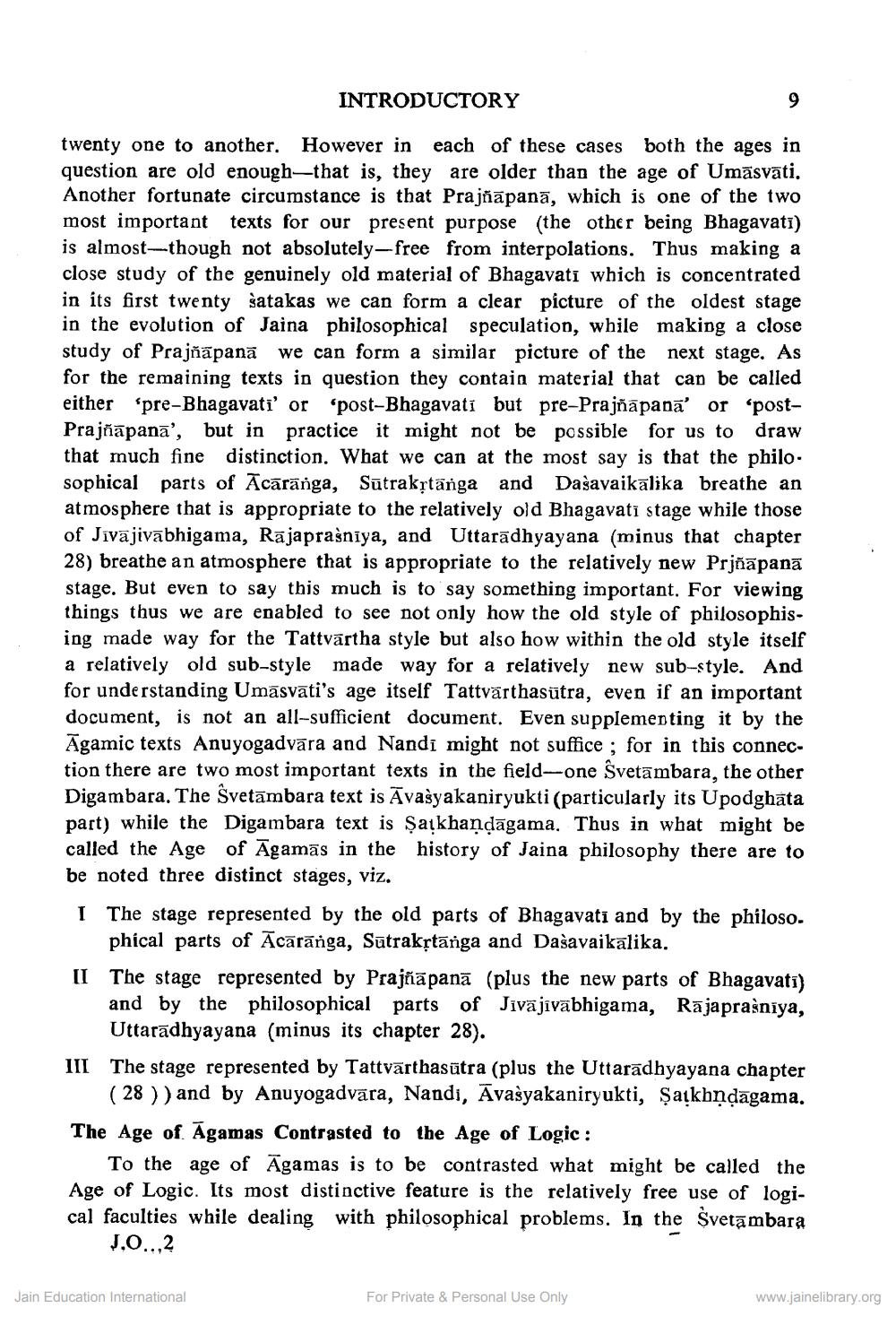________________
INTRODUCTORY
twenty one to another. However in each of these cases both the ages in question are old enough—that is, they are older than the age of Umāsvāti. Another fortunate circumstance is that Prajñāpanā, which is one of the two most important texts for our present purpose (the other being Bhagavati) is almost-though not absolutely-free from interpolations. Thus making a close study of the genuinely old material of Bhagavati which is concentrated in its first twenty satakas we can form a clear picture of the oldest stage in the evolution of Jaina philosophical speculation, while making a close study of Prajñāpanā we can form a similar picture of the next stage. As for the remaining texts in question they contain material that can be called either “pre-Bhagavati' or 'post-Bhagavati but pre-Prajñāpanā' or 'postPrajñāpana', but in practice it might not be possible for us to draw that much fine distinction. What we can at the most say is that the philo. sophical parts of Acārānga, Sūtrakịtänga and Dasavaikālika breathe an atmosphere that is appropriate to the relatively old Bhagavati stage while those of Jivajivabhigama, Rājaprašniya, and Uttarādhyayana (minus that chapter 28) breathe an atmosphere that is appropriate to the relatively new Prjñāpanā stage. But even to say this much is to say something important. For viewing things thus we are enabled to see not only how the old style of philosophising made way for the Tattvārtha style but also how within the old style itself a relatively old sub-style made way for a relatively new sub-style. And for understanding Umāsvāti's age itself Tattvärthasūtra, even if an important document, is not an all-sufficient document. Even supplementing it by the Āgamic texts Anuyogadvāra and Nandi might not suffice ; for in this connection there are two most important texts in the field-one Svetāmbara, the other Digambara. The Svetāmbara text is Āvasyakaniryukti (particularly its Upodghāta
) while the Digambara text is Şarkhandāgama. Thus in what might be called the Age of Agamās in the history of Jaina philosophy there are to be noted three distinct stages, viz.
I The stage represented by the old parts of Bhagavati and by the philoso.
phical parts of Acārānga, Sūtrakrtānga and Dasavaikalika.
II The stage represented by Prajñāpanā (plus the new parts of Bhagavati)
and by the philosophical parts of Jiväjivābhigama, Rājaprasniya,
Uttarādhyayana (minus its chapter 28). III The stage represented by Tattvārthasūtra (plus the Uttaradhyayana chapter
( 28 ) ) and by Anuyogadvāra, Nandi, Āvašyakaniryukti, Şałkhņdagama. The Age of. Āgamas Contrasted to the Age of Logic :
To the age of Agamas is to be contrasted what might be called the Age of Logic. Its most distinctive feature is the relatively free use of logical faculties while dealing with philosophical problems. In the Svetāmbara
J.O...2
Jain Education International
For Private & Personal Use Only
www.jainelibrary.org




